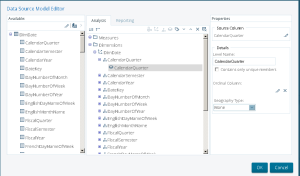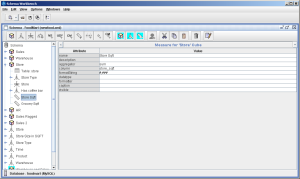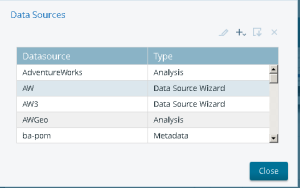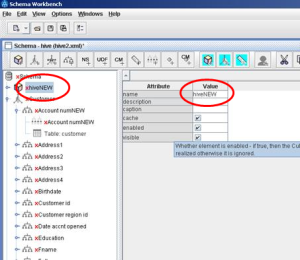If you’ve followed some of my tutorials earlier here or here where I’ve described the process of auto-generating OLAP models through the Pentaho auto-modeler, you will end up with a basic multidimensional star schema that allow you a basic level of customization such as here:
In most cases, that environment will provide enough control for you to create a model that will cover most of your analytical reporting needs. But if you want to build out a more complex model, you can manipulate the underlying Mondrian schema XML directly in a file or use the Pentaho Schema Workbench tool to build out snowflake schemas, custom calculations, Analyzer annotations, etc.
For direct XML editing of the multidimensional model, you can follow the Mondrian schema guide here.
To pull out the Mondrian model for editing from these Data Source Wizard sources, you can accomplish this by clicking the Export button on the Data Sources dialog box below:
If you use this method from the UI, you will download a ZIP file. Unzip that file and save the “schema.xml” inside the ZIP to your local file system. You can then edit that file in Schema Workbench (PSW) or in an XML editor and import your changes back into the platform from that same Manage Data Sources dialog in the Web UI, or just publish it directly to your server from PSW:
Here’s another tip that I like to do when I pull out a Mondrian schema from an auto-generated Data Source Wizard model that I think is easier than export a ZIP is to use the REST API call for extracting the XML schema directly. I downloaded curl on my Windows laptop to use as a command-line tool for calling Web Services APIs. Now I can make this REST call
curl –user Admin:password http://localhost:8080/pentaho/plugin/data-access/api/datasource/analysis/foodmart/download > foodmart.xml
To make the above call work in your environment, change the “–user” credentials to your username:password, replace the hostname with your server and then substitute “foodmart” for the name of your model that you wish to modify. You can then edit that resulting file (foodmart.xml) in PSW or with an XML editor.
Don’t forget to import the updated file back into the platform or Publish it from Schema Workbench so that users will then be able to build their reports from the new schema.
One last trick that I do when I re-import or re-publish the edited model when I started from the generated Data Source Wizard model, is to rename the model in PSW or the XML file so that it will appear as a new model in the Pentaho tools. This way, you can avoid losing your new updates if you were to update the model in the thin modeler from Data Source Wizard again.





[…] Tips for Editing Pentaho Auto-Generated OLAP Models. […]
[…] a quick update to my previous blog post on mechanisms to auto-generate Mondrian cubes using Pentaho, I’ve included a brief 10-minute video on how to modify and enhance the auto-generated models […]
this is very good nice article. this is very useful for Pentaho students.
==========================================================
This is very nice article. This is very use ful for Pentaho Learners.
http://www.bytesonlinetraining.com/pentaho-online-training/
===========================================================
hi sir. i want to do Pentaho training.
Pentaho ONlINE TRAINING Thanks for providing valuable information.